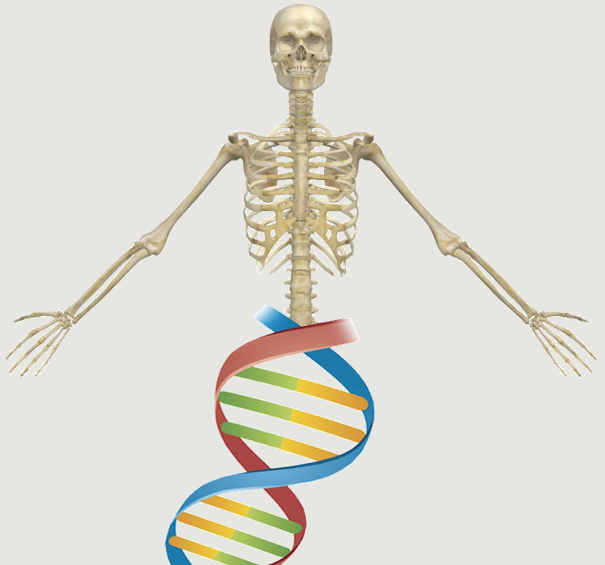Shteyer A, Gazit D, Passi-Even L, Bab I, Majeska R, Gronowicz G, Lurie A, Rodan G.
Formation of calcifying matrix by osteosarcoma cells in diffusion chambers in vivo [Internet]. Calcif Tissue Int 1986;39(1):49-54.
Publisher's VersionAbstractThe potential of clonal rat osteosarcoma (ROS) cell lines to form mineralized matrices was assessed in diffusion chambers in vivo. Diffusion chambers were inoculated with osteoblastic (ROS 17/2 and its subclone ROS 17/2.8) and non-osteoblastic (ROS 24/1) clonal lines and implanted either intraperitoneally into athymic mice or subcutaneously into syngeneic ACI rats. Control chamber cultures of rabbit marrow or spleen cells were also incubated in athymic mice. Light and electron microscopy of chambers with ROS 17/2 and ROS 17/2.8 cells revealed production of mineralized matrices typical of osteosarcoma and characterized by abundance of collagen fibrils and associated mineralizing nodules. ROS 24/1 cells produced similar collagenous matrices, but these were devoid of mineral. The present experiments, carried out independently in two different laboratories, demonstrate the potential of ROS cells to produce a mineralized matrix. This corroborates previous studies on other osteoblastic features of these cell lines.
Lustmann J, Gazit D, Ulmansky M, Lewin-Epstein J.
Chondromyxoid fibroma of the jaws: a clinicopathological study [Internet]. J Oral Pathol 1986;15(6):343-6.
Publisher's VersionAbstractChondromyxoid fibroma is a benign skeletal tumor which rarely affects the jaws. Only 10 cases have been found in the literature, all of them located in the mandible. In the present articles, 2 additional cases are described, one of them being the first reported case located in the maxilla. Up-to-date clinical and pathological data of 2 reported cases and a review of the literature are presented.
Margulies JY, Leichter I, Robin GC, Gazit D, Bab I.
A correlative assessment of photon interaction and histomorphometric measurements of bone density [Internet]. Arch Orthop Trauma Surg 1986;105(4):239-42.
Publisher's VersionAbstractThirty-four femoral necks from human cadavers were measured by techniques assessing bone density and bone mineral density, and by the Singh index. These methods are based on photon interaction with biological components and can be applied noninvasively for clinical evaluation of changes in skeletal status. Trabecular bone volume, mineralized bone volume, and relative osteoid volume were evaluated histomorphometrically using undecalcified histologic sections obtained from the same samples. The trabecular and mineralized bone volumes showed significant correlations with the bone density and mineral density. These results enhance the validity of recently developed photon-interaction techniques for evaluating bone properties.
Bab I, Ashton BA, Gazit D, Marx G, Williamson MC, Owen ME.
Kinetics and differentiation of marrow stromal cells in diffusion chambers in vivo [Internet]. J Cell Sci 1986;84:139-51.
Publisher's VersionAbstractRabbit marrow cells inoculated into diffusion chambers (10(7) cells/chamber) were implanted intraperitoneally into athymic mouse hosts and cultured in vivo for 20 days. A connective tissue consisting of bone, cartilage and fibrous tissues is formed by the stromal fibroblastic cells of marrow within the chambers. Cell kinetics and tissue differentiation have been studied using histomorphometric and biochemical analyses. Haemopoietic cell numbers decrease to less than 0.05% of the initial inoculum during the 20-day period. At 3 days an average of 15 stromal fibroblastic cells only are identifiable within the chambers. After 3 days there is a high rate of stromal cell proliferation with a doubling time of 14.5 h during the period from 3 to 8 days and an increase in the total stromal cell population by more than six orders of magnitude from 3 to 20 days. Thirteen to fourteen population doublings occur before expression of the first observable differentiation parameter, alkaline phosphatase activity. The data demonstrate that the mixture of connective tissues formed within the chamber is generated by a small number of cells with high capacity for proliferation and differentiation. This is consistent with the current hypothesis that stromal stem cells are present in bone marrow.
Milgrom C, Sigal R, Robin GC, Gazit D, Fields S, Benmair J, Caine Y, Atlan H.
MRI and CT scan compared with microscopic histopathology in osteogenic sarcoma of the proximal tibia [Internet]. Orthop Rev 1986;15(3):165-9.
Publisher's VersionAbstractThe authors report the case of a 15-year-old female who presented with a history of vague but constant pain about the medial aspect of her right knee. X-ray established the presence of an expanding lesion in the medial tibial plateau. Computerized axial tomography (CT) and magnetic resonance imaging (MRI) were used in the evaluation of the lesion. The authors compare the preoperative CT and MRI findings with the microscopic histopathology of the amputation specimen and note that the CT scan underestimated the extent of the microscopic tumor boundaries, whereas MRI showed altered activity beyond these boundaries.

